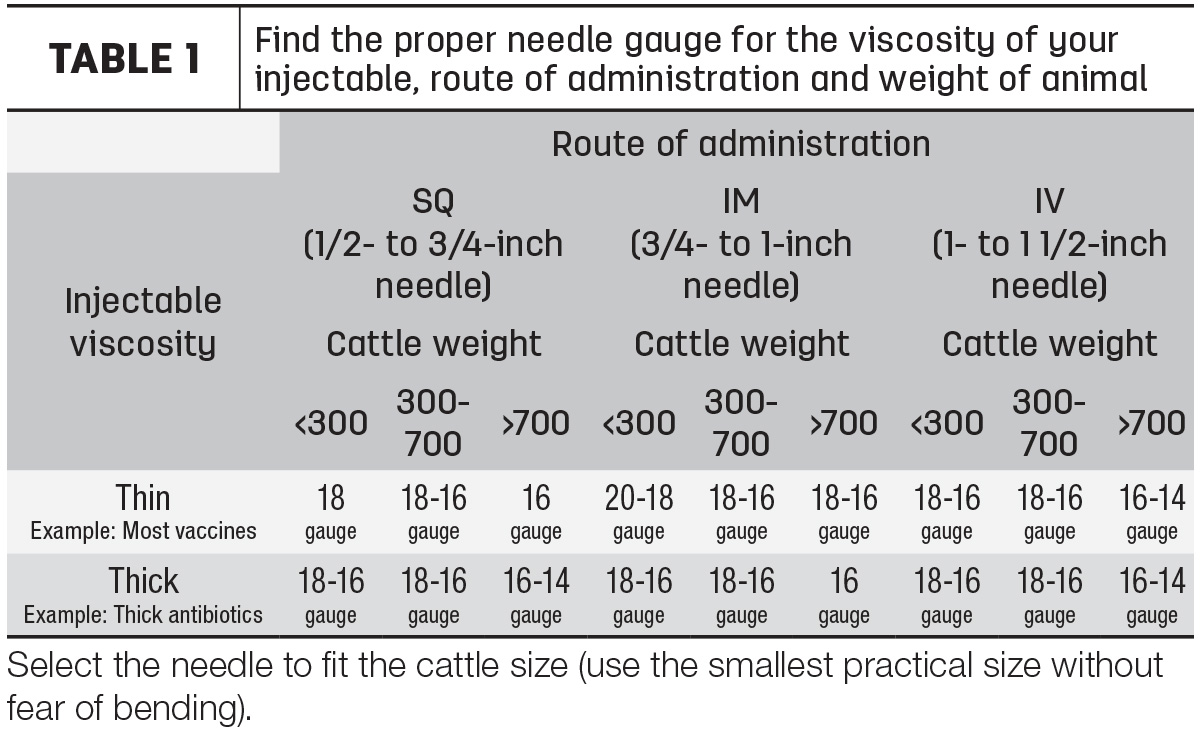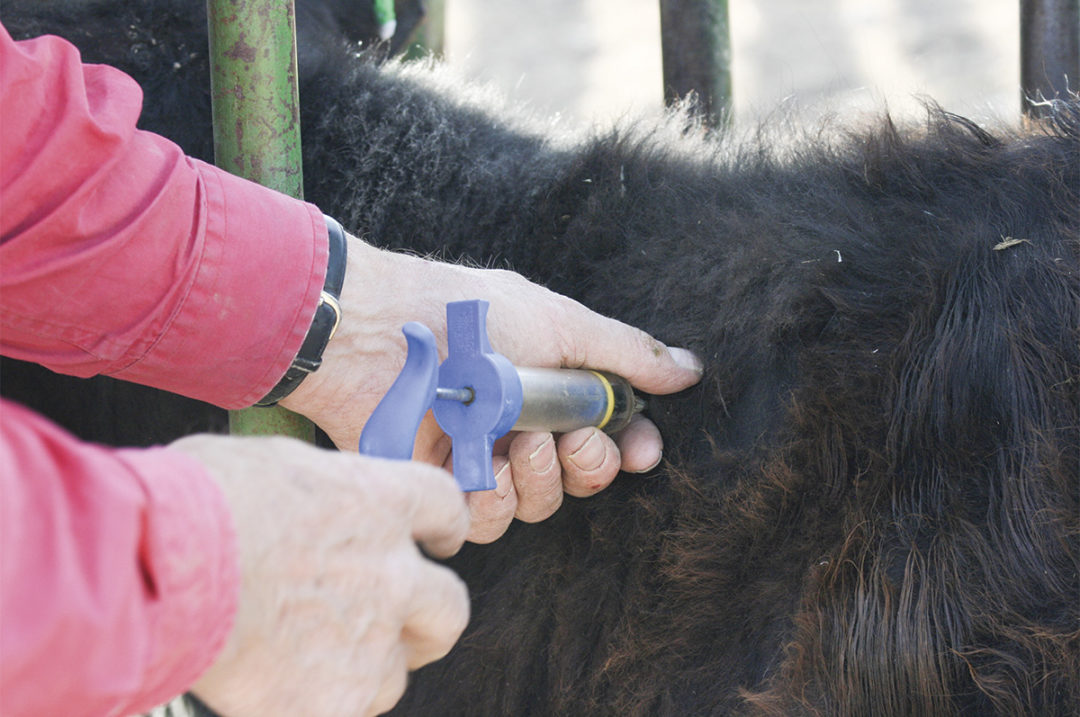Disposable hypodermic needles are a necessary tool in maintaining cattle health. They provide a convenient and economical route to deliver products to animals in a safe and effective manner. Understanding when and how to use them are key components in a herd health protocol.
Choosing the right needle
Needle selection is based on weight of cattle, route of administration and viscosity (thickness) of product. Gauge is determined by the size of the hole inside the needle, with the higher the gauge, the smaller the diameter of the needle. Length is labeled in inches and will determine where the injection is placed in the animal. Longer needles are needed for deeper-route injections, such as intravenous (IV) and intramuscular (IM). The best practice is to use the smallest needle available without fear of bending (Table 1). This will ensure accurate delivery of product while minimizing pain and tissue damage. Beef Quality Assurance (BQA) guidelines require all injections to be given in front of the shoulder, regardless of animal age. Always follow the label on products for recommended dose and route of injection.

Proper use of needles
It is important to have preventative measures in place when using disposable needles. Needles should be changed before becoming dull. A good rule to follow is to change needles every 10 animals. Only new, sterile needles should be introduced into bottles of product to prevent polluting the contents inside. Needles also need to be changed when contaminated with visible feces or dirt, or when the needle point is damaged or bent. Bent needles pose a risk of breaking and should not be straightened. Broken needles must be treated as an emergency because they may migrate within the tissue and become difficult or impossible to find. BQA guidelines recommend developing a standard operating procedure (SOP) for handling broken needles in animals.
Suggested SOPs should include:
- Marking the location where the needle was injected.
- Immediately contacting a veterinarian to have the needle surgically removed.
- If unable to recover the needle, the animal’s ID must be recorded to ensure it does not enter the food chain. The animal should be euthanized and disposed of properly at the end of its productive life.
Remember biosecurity
Bacteria and viruses that cause disease and can be carried in blood are defined as blood-borne pathogens. There are several different bovine diseases that fall into this category, with bovine leukosis virus and anaplasmosis as two of the most recognized. Both conditions are spread through herds by transferring infected blood to non-infected animals. Examples of this include vector transmission from biting flies and ticks and mechanical transmission from infected needles and surgical instruments.
A study compared the transmission of anaplasmosis between needle and needle-free injections in Holstein steers. The results showed a 60% transmission rate of anaplasmosis in the needle-injection group. Changing needles after every animal is one way producers can help stop the transmission of pathogens in a disease-positive herd. Controlling external parasites and disinfecting surgical instruments such as tattoo pliers, dehorning tools and castration knives are other ways to help stop the spread. Having these standard guidelines in place should help operations maximize time and health efficiency.
References omitted but are available upon request by sending an email to the editor.









